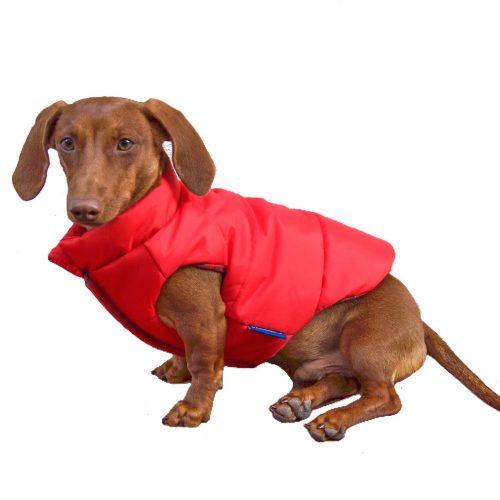When to Replace Chainsaw Bar
Chainsaws bars are made from some of the best quality power tool materials you can get anywhere. But, while they might seem to last a lifetime, this is not usually the case as you often have to replace chainsaw parts at some point.
As the chain spins around, the chainsaw bar has to handle a lot of heat. The excessive heat and the abuse that comes from the chainsaw’s typical uses lead to wear and damages. Here we look at the most common situations when you have to replace a chainsaw bar.
Why do I Need to Replace My Chainsaw Bar?
A damaged or worn-out chainsaw bar is a safety hazard, and it will be more dangerous to you than the tree you are cutting. With a damaged chainsaw bar, there is a greater likelihood of a chain snap when cutting. Also, replacing a broken chainsaw bar helps ensure you maintain stability when cutting and can easily guide the saw and cut more efficiently.
When to Replace Chainsaw Bar
For seasoned chainsaw users, it is often apparent when you need to replace the chainsaw bar, but for the inexperienced ones, that are not always that clear. However, here are some of the most common situations when you need to replace your chainsaw bar.
- Damaged or Bent Bar
The most obvious time when you need to replace your chainsaw bar is when it gets damaged or bent.
While you can sometimes still use a chainsaw with a slight bar bend, this affects your cut’s quality significantly, and given how hard the metal is, it is difficult to remove the arc without causing even more problems.
Damages like cracks on the bar or its rail affect the chain’s movement and hence the need to replace the chainsaw bar.
- Side to Side Chain Wiggling
If you notice that your chain wiggles from side to side, even you are sure it is tight enough, it is time to change the bar as this is an indication that the grooves have widened and you cannot cut properly.
A wiggly chain makes it almost impossible to get a straight cut since it does not stay at one point. While some power tool repair shops can fix the groove gaps, it is always better to buy a new bar to avoid the hassle.
- Tilted Chains Blade Edges
The blades on the chain in a chainsaw have to be straight to ensure they can saw wood properly. If you notice the one on your chainsaw seems to be tilted at an angle and not straight, this is often a sign there is a problem with the bar. For most instances, bar grooves are worn on one or both sides, causing the chain to tilt at an angle.
You can quickly check whether the chain is tilted using a ruler or a straight piece of wood. The test entails placing the chainsaw on a flat surface and pressing the ruler against the bar to check whether there is a gap between it and the bar’s surface.
The absence of a gap means the chain is tilting to one side and hence causing irregular cuts. Therefore, a chainsaw bar replacement is necessary.
- Jammed or Damaged Nose Sprocket
A nose sprocket allows the chain to move in a fixed place between the teeth. One of its key functions is to maximize the chainsaw’s speed and power. However, the sprocket is often of the first components to wear out in a chainsaw.
The nose sprocket gets lubrication from the bar oil reservoir, and so if there is an issue restricting the oil supply, it can face increased friction that leads to damages.
Some chainsaw types allow you to replace the nose sprocket, but in many models, the only way to deal with this issue is to replace the chainsaw bar with a new one.
Recommendation
According to HomeGearX, the Stihl 3003 008 6821 is our top recommendation as it is a heavy-duty steel 20-inch chainsaw bar suitable for all-around users and features 3-spot laminated welding and a star-shaped sprocket.
Tips to Maintain your Chainsaw Bar
- Keep It Lubricated: When using your chainsaw, it is vital to ensure that there is also sufficient oil to keep the bar lubricated to minimize excessive wear.
- Clean Bar Oiler Holes: Even if your chainsaw bar has adequate oil, it might not still get sufficient lubrication if the oiler holes are dirty. Therefore, always make sure they are clean before using the saw to maintain smooth oil flow.
- Keep Grooves Clear: It is crucial to clean the grooves on the chainsaw bar before and after use to ensure no sawdust is stuck in there. Sawdust can suck up some of the oil and hence affecting lubrication.
- Never Force Cuts: Another essential point to keep in mind to ensure your chainsaw bar remains in great shape is never to force any cut. A chainsaw cannot do everything. Therefore, forcing the tool to make cuts beyond its abilities increases the likelihood of damaging the chainsaw bar.
Conclusion
A chainsaw bar plays a crucial role in the chainsaw’s performance, and if yours is worn out or damaged, it can significantly affect the cut quality and usability. A damaged or bent chainsaw bar, wiggling chain, or tilted blades are all signs you need to replace the bar. While some issues such as widened groove gaps can be fixed, you are always better off buying a new one.




